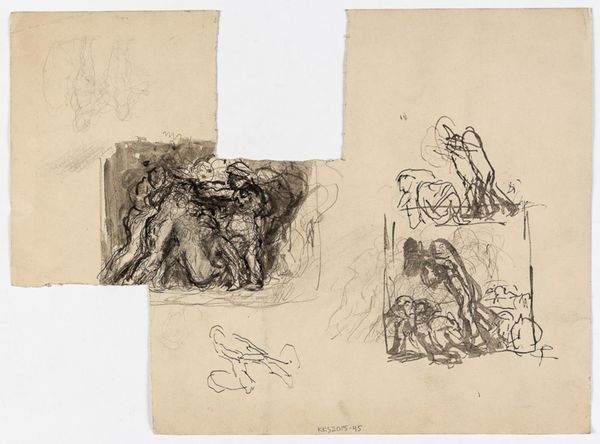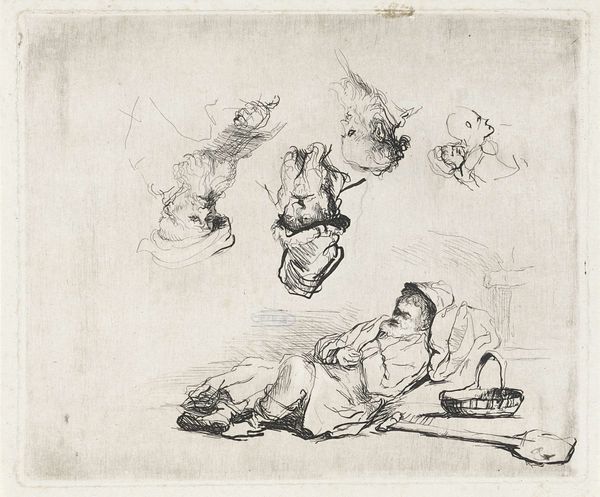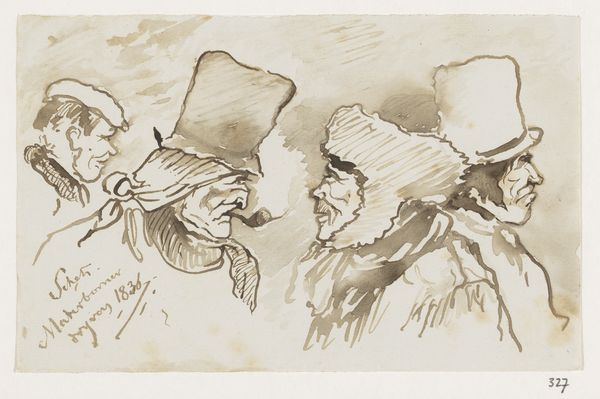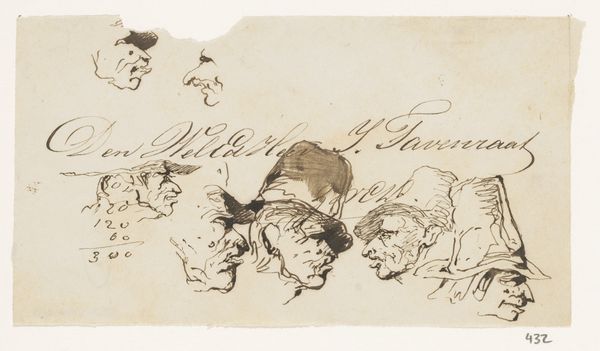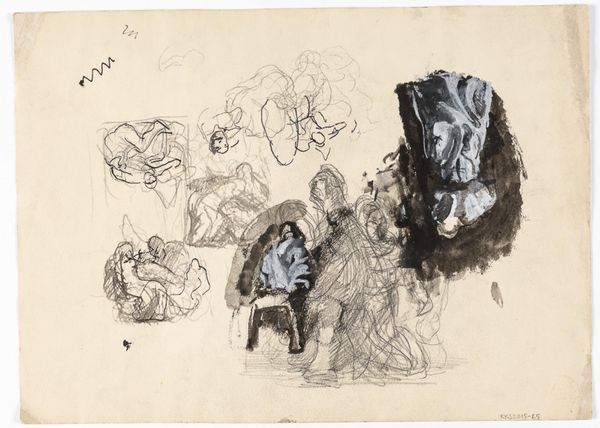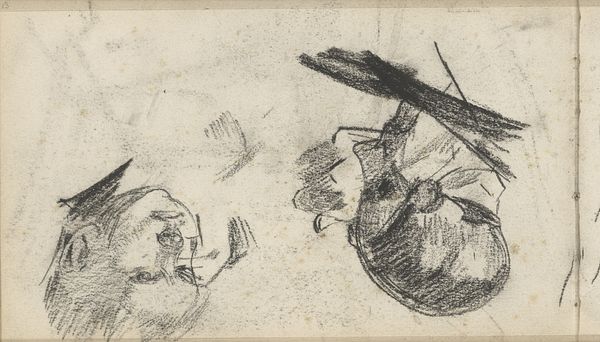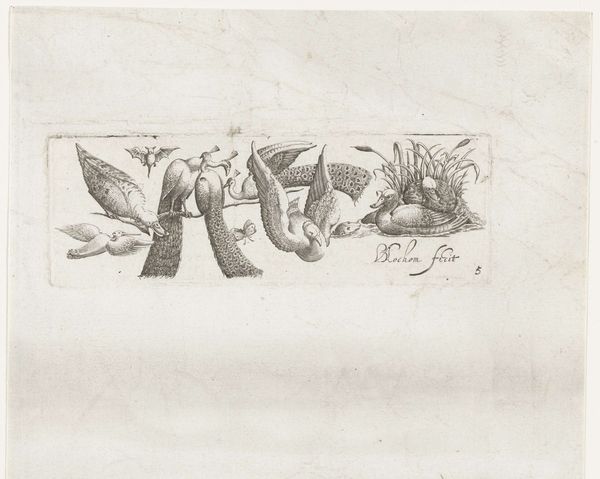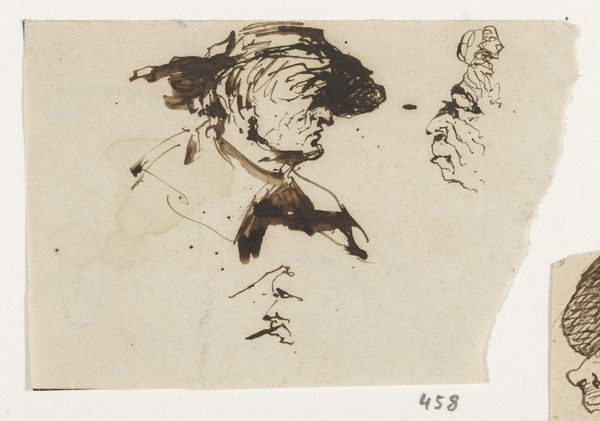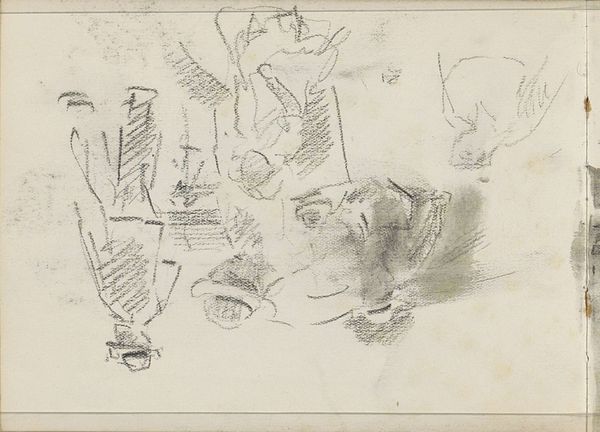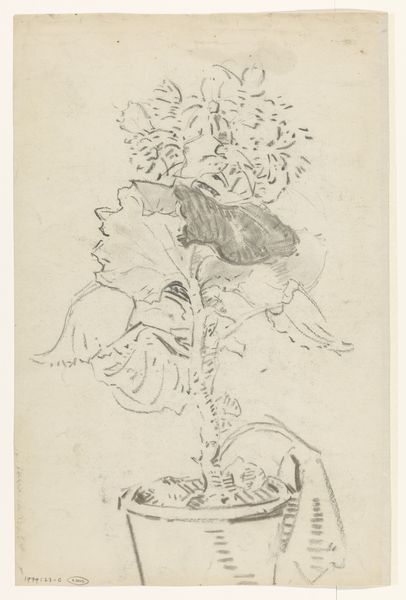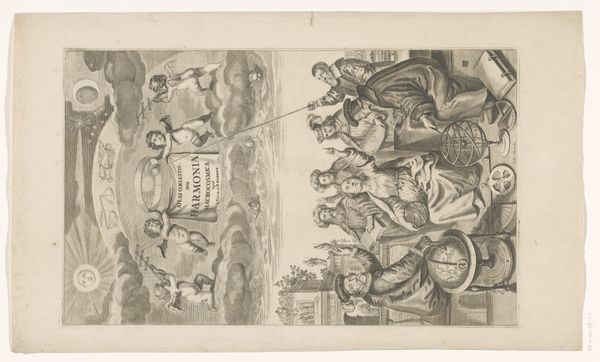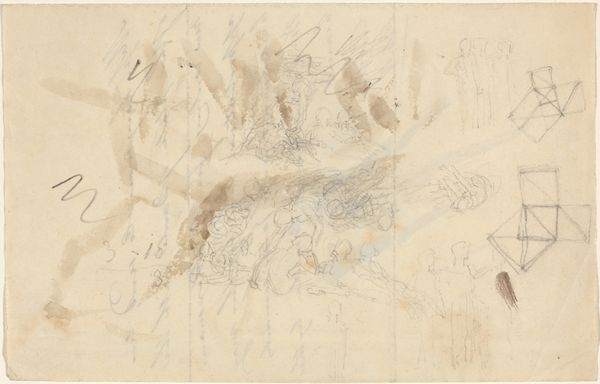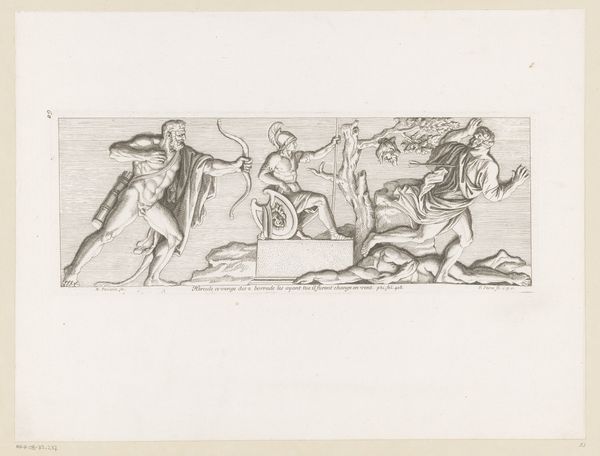
Dimensions: height 200 mm, width 90 mm
Copyright: Rijks Museum: Open Domain
This drawing on paper was made by Johannes Tavenraat in the 19th century. The artist used ink to create a series of sketches of heads and figures, alongside what appears to be some numerical calculations. The material itself is relatively humble: paper was, by the 1800s, an established and relatively inexpensive surface for drawing. Similarly, ink was readily available. It's the artist's hand that brings value to the sheet. Looking closely, you can see the quickly jotted lines, the economy with which Tavenraat captured the likeness of his subjects. The varying pressure of the pen shows confidence and skill. This wasn't a work intended for display, of course. It was a preparatory exercise. Yet, it shows how even the simplest of means can be elevated through artistic labor. Appreciating the material and the marks allows us to look beyond traditional hierarchies of value and understand the artistry inherent in the everyday practice of drawing.
Comments
No comments
Be the first to comment and join the conversation on the ultimate creative platform.
